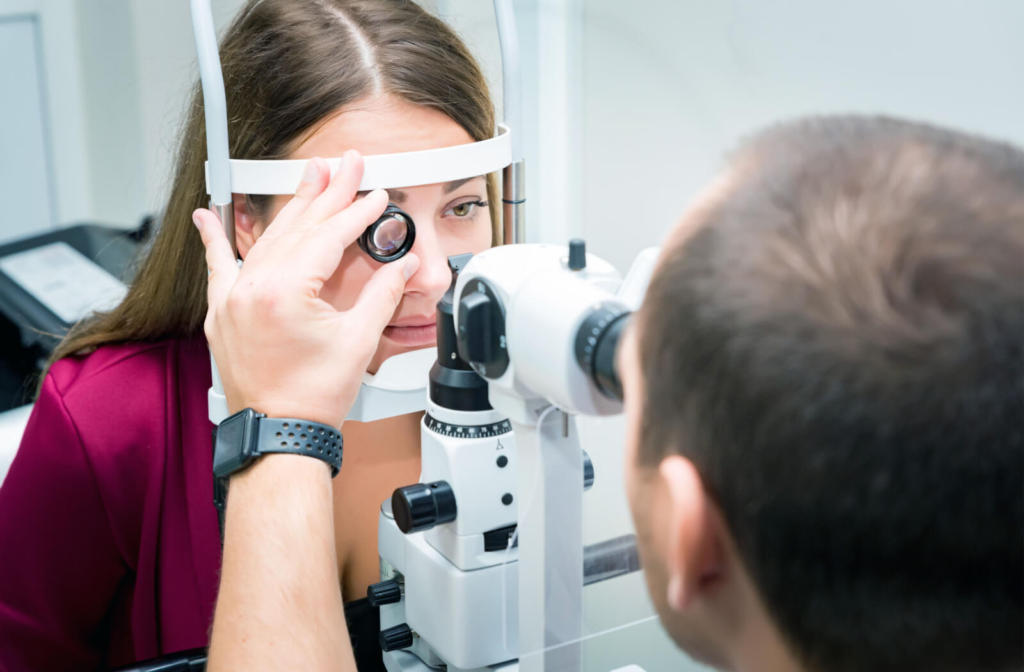Meibomian gland dysfunction (MGD) is a common condition, and also a major cause of evaporative dry eye disease (the more prevalent form of dry eye disease). MGD can cause discomfort, blurry vision, and sensitivity to light.
If you suffer from MGD, IPL therapy is certainly worth considering. IPL treatment has been shown to be safe and effective in improving tear film stability, meibomian gland functionality, and overall ocular health. IPL therapy can also be an excellent therapeutic strategy when used in conjunction with other dry eye treatments.
This blog post will explore how IPL therapy can help with MGD, what to expect from the treatment, and more.
What Is Meibomian Gland Dysfunction?
Meibomian gland dysfunction (MGD) occurs when the meibomian glands aren’t functioning correctly, and is a prevalent condition that affects millions of people worldwide. When these tiny glands (the meibomian glands) in the eyelids become blocked or damaged, it can result in dry, irritated eyes.
Fortunately, this condition is easily diagnosed by eye care professionals and can be treated in various ways.
MGD is the leading cause of evaporative dry eye disease, which is more prevalent than other forms of dry eye disease.
Symptoms of MGD
In its early stages, you might not experience any symptoms at all. However, as the condition progresses, you may begin to notice burning or dryness in your eyes. It may feel like there’s something in your eye, and your eyelids could become inflamed or red.
Some might experience moments of blurred vision that improve after blinking. Some symptoms worsen after prolonged computer use or exposure to dry air in their homes or offices.
Treatment for MGD
When treating MGD, applying warm compresses and massaging the eyelids is a common first step. While this method can be beneficial, it may not be enough to alleviate symptoms of MGD completely.
There are now numerous treatment options available to patients—one method is intense pulsed light (IPL) therapy.
Intense Pulsed Light (IPL) Therapy
Intense pulsed light (IPL) therapy is a treatment that is commonly used to alleviate dry eye symptoms caused by meibomian gland-related issues.
By utilizing scattered light pulses, IPL improves tear flow and reduces the inflammation of blood vessels in the eyes. Meibomian glands that are obstructed are treated, in combination with manual expression of the lids, to ensure proper oil flow. This results in the relief of dry eye symptoms by addressing the underlying cause of irritation.
Patients typically require 3 to 4 treatment sessions for optimal benefits, followed by a possible maintenance treatment every 6 to 12 months. Depending on the severity of your symptoms, you may require additional maintenance. Several studies show that IPL can significantly improve tear break-up time in 87% of patients.
IPL treatment is quick and with minimum reported discomfort. Once the treatments are done, you can return to your daily activities.

Enhance Your Ocular Health with IPL Therapy at Vector Eye Centre
IPL treatment is a safe, non-invasive, and effective way to improve ocular health and treat meibomian gland dysfunction.
Vector Eye Centre’s experienced ophthalmologists have modern diagnostic and treatment techniques to provide personalized treatments. Contact us today to schedule your appointment and determine if IPL therapy is right for you. At Vector Eye Centre, we understand how difficult it can be to deal with MGD, so let us take it out of your hands and give you the wonderful feeling of comfort that comes with high-quality eye care.



